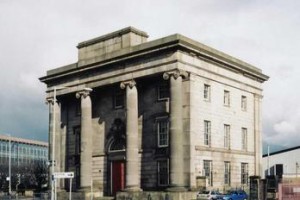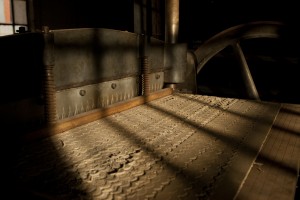Introducing BCT’s three new Trustees
We’ve allowed Jenni Waugh, Rachel Cockett and William Lilley a few weeks to settle into their roles as Trustee Directors for Birmingham Conservation Trust, but the time has come to officially welcome them to the team and find out a little bit about them!
1. What do you do when you are not being a Trustee for BCT? What is your line of work?
 Jenni: For the last few years, I have been working freelance for museums, archives and heritage organisations, helping staff to build their public profiles and develop new audiences. I’m also a member of the National Trust Regional Advisory Board. I love it because I have the privilege of working with people on a wide range of projects. At the moment, I am working with the regional Museums on the Move to develop their use of social media; with Abberley WI on a history of their village since 1905; and with the Worcestershire Regimental Museum to develop their new marketing and audience engagement plan.
Jenni: For the last few years, I have been working freelance for museums, archives and heritage organisations, helping staff to build their public profiles and develop new audiences. I’m also a member of the National Trust Regional Advisory Board. I love it because I have the privilege of working with people on a wide range of projects. At the moment, I am working with the regional Museums on the Move to develop their use of social media; with Abberley WI on a history of their village since 1905; and with the Worcestershire Regimental Museum to develop their new marketing and audience engagement plan.
 William: I currently work for the Accord Housing Group, leading on developing social and community enterprise. I am also a non-executive director of the Birmingham Mental Health Consortium and a keen blogger on urban regeneration and derelict conservation sites.
William: I currently work for the Accord Housing Group, leading on developing social and community enterprise. I am also a non-executive director of the Birmingham Mental Health Consortium and a keen blogger on urban regeneration and derelict conservation sites.
 Rachel: Partnerships and Performance Manager, for Birmingham Museums Trust. A business management post responsible for strategic programme delivery, developing and maintaining partnerships, and regional and national networks. I live in Worcestershire and I am also a Trustee for Hartlebury Castle Preservation Trust. In my spare time I visit museums, galleries and heritage venues a lot! More about my personal interests via @rachelcockett.
Rachel: Partnerships and Performance Manager, for Birmingham Museums Trust. A business management post responsible for strategic programme delivery, developing and maintaining partnerships, and regional and national networks. I live in Worcestershire and I am also a Trustee for Hartlebury Castle Preservation Trust. In my spare time I visit museums, galleries and heritage venues a lot! More about my personal interests via @rachelcockett.
2. What did you think about the Coffin Fitting Works when you went to look around?
Jenni: It was such an atmospheric building – both because of its industrial past and because of the type of materials the company made. I particularly liked the roof beams and braces – a very practical way of strengthening the building which was also very decorative.
William: Visiting the Coffin Works is a a strange and mysterious experience. You are immediately struck by how perfectly kept the internal rooms of the building are, as if the factory workers were to return any minute to get working on a new coffin.
Rachel: I loved the industrial remnants and the signs of long-gone habitation like the be-masked paper dancer pasted to a wall. I made a pin board or my favourite things here http://pinterest.com/rachelcockett/newman-brothers-coffin-works-birmingham/
3. What main areas of the BCT’s work are you looking forward to supporting the most and what skills are you bringing to support the Trust’s work?
Jenni: Having worked for many years with heritage organisations to develop their marketing skills using techniques I learned when working for the BBC, I am very much looking forward to working with the volunteers and staff to broadcast BCT’s name and achievements as widely as possible and to encourage other residents of Birmingham to appreciate and protect their local treasures.
I know that my Great Grandfather was a silver smith in the Jewellery Quarter in the early 20th cent. So, , as I make silver jewellery in my spare time, I confess that I also hope to sneak into the Coffin Factory with my tools one day to seek inspiration and make some pieces with other volunteers.
William: As a qualified fundraiser and business development specialist, I am excited to support the Trust develop a long term and sustainable future in conserving and revitalisingBirmingham’s most historical buildings.
Rachel: I love the potential of social media and look forward to developing @BirminghamCT alongside other social media. I’m especially interested in how we develop the online and offline roles and profile of the Coffin Works alongside the work of Birmingham Conservation Trust.
I have lived in Worcestershire since 2002, having previously lived inBirminghamsince 1993. I intend to remain in the region and have always looked for opportunities to contribute to the culture and heritage of theBirminghamand the widerWest Midlands. I am committed to conserving heritage (not in aspic!) in all its forms for the purpose of making it accessible to others.
4. What are your favourite bits of Brum’s heritage and why?
Jenni: I love the architecture – evidence of the city’s swift growth to wealth in the 19th century and its appreciation then of sturdy civic buildings. I also love how many surprising and wonderful characters lived and worked here who played such significant parts in the nation’s history, but who seem shamefully under-represented in the often London-centric school history syllabus. It’s time we put that right!
 William: One of the things most outsiders to Birmingham comment on when they frequent the city, is the amount of beautiful derelict buildings there are, if it’s when you first arrive into Moor Street and catch site of the grand Curzon Street Station or drive past the skeleton of the Belmont Row Works in Eastside. Birmingham’s biggest treasure is its architectural heritage.
William: One of the things most outsiders to Birmingham comment on when they frequent the city, is the amount of beautiful derelict buildings there are, if it’s when you first arrive into Moor Street and catch site of the grand Curzon Street Station or drive past the skeleton of the Belmont Row Works in Eastside. Birmingham’s biggest treasure is its architectural heritage.
Rachel: Well, Birmingham Museums, its buildings and collections, naturally!
In the mid-90s I did my degree atVittoria Streetin Brum’s Jewellery Quarter. I have seen the area change in a number of ways. I’m fascinated by the changing use of the JQs buildings and the increasing range of ways they are adapted and re-used, such as the increasing use of empty buildings for art exhibitions and the appearance of interesting graffiti and street art. I hope the spontaneity and innovation of this artist-led creativity will remain as restorations and re-purposing takes place and new inhabitants move in.



